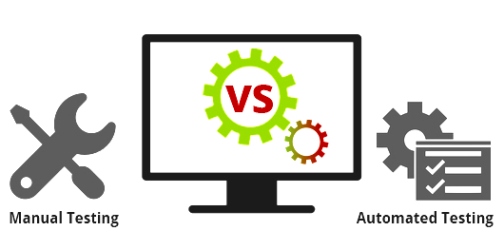Testing remains an integral part of the success of a software project. These are obviously the two software testing methods. They share the same objective of helping the developers write a flawless program that meets the users of the users without hitches. However, there are some differences between the methods of operation of these different testing techniques. Let’s discuss them.
Manual software testing
The name of this testing technique says it all. The testing is done manually without the input of any testing machine, script, or tool. The developer(s) will manually go through the code to detect the bugs before debugging them.
This process is very time-consuming, especially if there is a huge amount of code lines to be manually searched for hidden bugs. It will take the debuggers some amount of time to identify an error, and this may become strenuous and boring to them.
Manual testing is the ideal testing method if the test case is expected to be repeated just once or twice or when embarking on UI testing. In each case, using automated testing will be too expensive. If regression testing is contemplated, manual testing will be inefficient in catching hidden defects if the requirements change frequently.
Another con of manual testing is that it is not an effective way of testing a program on many machines with different Operating Systems. In this case, each task has to be executed by different testers. This will be time-consuming as well as cost a lot to be implemented.
Automated testing
In opposition to manual testing, automated testing refers to the process of testing a system by using some tools, software, and scripts. While humans take care of the manual testing, the input of human is removed here and scripts and other tools are given the liberty to take absolute control over the testing.
Some of the reasons why many software development companies prefer automated testing to manual testing include:
- Speed: This is definitely the first advantage of automated testing on the manual counterpart. While it will take days or weeks to fully test a program manually, automated testing will be through within a couple of hours. This saves time for the company. If the business lacks complex business rules, automated testing will be ideal in getting things done better and faster.
- Reliability: Manually testing a program exposes it to some minor human errors. A bug may be accidentally overlooked, leading to more problems in the long run. An automated testing will definitely spot such bugs and report them for correction. A great advantage too.
When testing is expected to be repetitive for a good number of times and manual testing is found inefficient, automated testing will adequately fill the vacuum. This testing method is also the best for if the company wants to perform regressions in testing, acts that will involve frequent code changes.
Testing a software program across different platforms may be impossible to be done manually. However, that can easily be done with automated testing. The testing technique can leverage its versatility to test the program across man platforms concurrently.

While these testing techniques may be useful in different circumstances, it is advisable that a software development company gets it right. Making the wrong choice will lead to tons of unseen bugs that may impact negatively on the output of the program. If the right choice is made, it will spare them a lot of stress as bugs can easily be detected and corrected. This will lead to a better and more robust program that has a better success rate among users.
